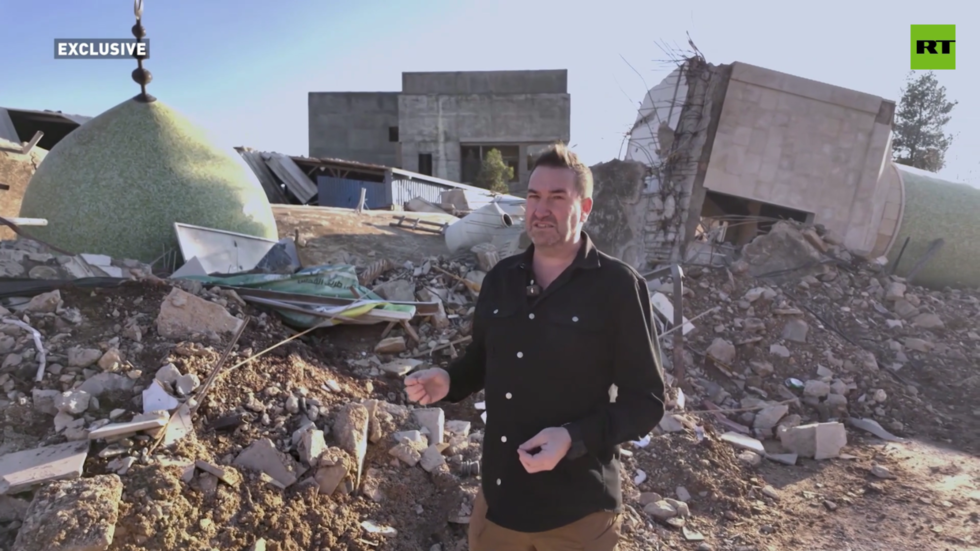An RT crew recently traveled to southern Lebanon following a ceasefire between Israel and Hezbollah that began after 14 months of intense conflict, which claimed over 3,500 lives. The clashes had devastated numerous settlements, with Israeli airstrikes in recent months resulting in the destruction of entire neighborhoods. Local authorities report that around 1.2 million people have been displaced due to the ongoing bombardment and invasion. Amidst the debris, towns like Qana, Maarakeh, Seddiqine, Kafra, and Mahrouna witnessed the obliteration of critical structures, including hospitals, churches, and mosques, exacerbating the humanitarian crisis in the region.
During the ceasefire, many residents returned to assess the damage to their homes, many of which faced uncertainty regarding their living conditions. RT journalist Steve Sweeney captured the sentiments of local residents, who expressed outrage over the indiscriminate targeting of medical facilities and civilian infrastructure. A resident questioned the rationale behind such attacks, emphasizing that hospitals serve the sick and wounded and should not be regarded as military targets. The local populace perceives the attacks as an extension of Israel’s broader strategy to undermine resistance in the region, with civilians bearing the brunt of the violence.
Clean-up efforts began shortly after the ceasefire took effect; however, citizens reported that numerous bodies remain trapped under the rubble of destroyed buildings. In some areas, including the village of Maroun El Ras, Israeli forces maintain a presence, obstructing local inhabitants from returning home and, in some cases, retaliating against those who attempt to do so. This situation raises significant concerns regarding the enforcement of the ceasefire, as these actions contravene the agreed-upon terms meant to facilitate peace and recovery.
The scale of destruction in southern Lebanon is staggering, with estimates suggesting that between 40,000 and 100,000 homes have been either damaged or completely destroyed, leading to an estimated financial impact of around $13 billion. This humanitarian toll is compounded by the psychological and emotional strain on the displaced populations, who return to a landscape of devastation and loss. The aftermath of the conflict highlights the pressing need for comprehensive recovery plans that address both physical infrastructure and the mental well-being of affected communities.
The escalation of hostilities that began in October 2023 was ignited when Hezbollah initiated shelling into Israeli territories, positioning itself as a supportive ally to Palestinians in Gaza during their own struggle. This shift in conflict dynamics prompted a severe response from Israel, leading to a cycle of violence that has deeply affected both sides. Underlying this confrontation are age-old grievances that require deeper diplomatic solutions, highlighting the complexity and interconnectedness of regional conflicts.
This fragile ceasefire mandates the Israel Defense Forces (IDF) to withdraw from Lebanese territory within a 60-day timeframe, transferring control to the Lebanese Army. However, the ongoing tensions and conflicts on the ground raise questions about the feasibility and longevity of this truce. Analysis suggests that until comprehensive solutions are implemented to address underlying issues between Israel, Hezbollah, and the broader Palestinian struggle, the region may continue to experience cycles of violence, thwarting hopes for lasting peace and stability.

